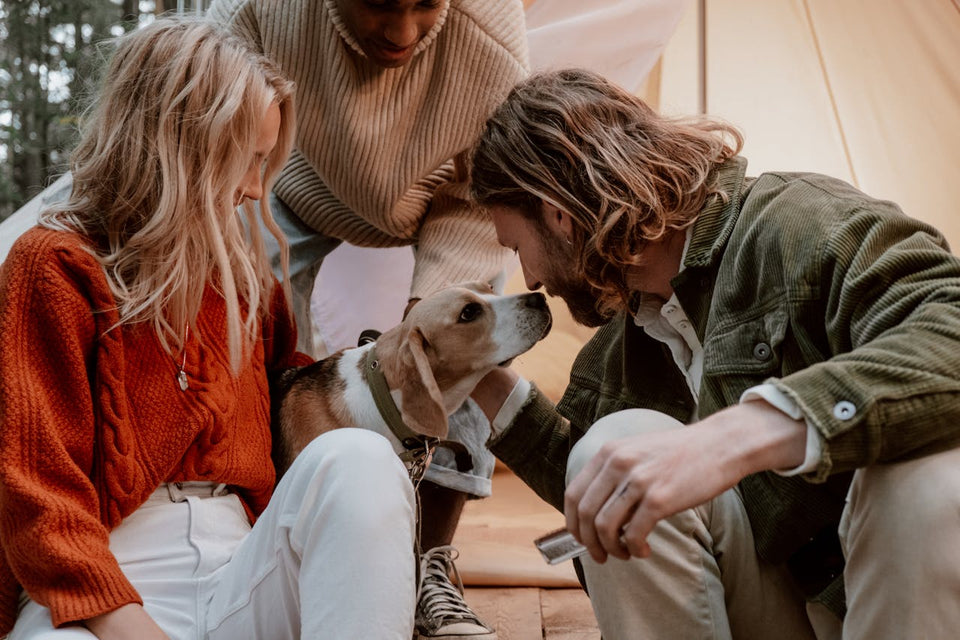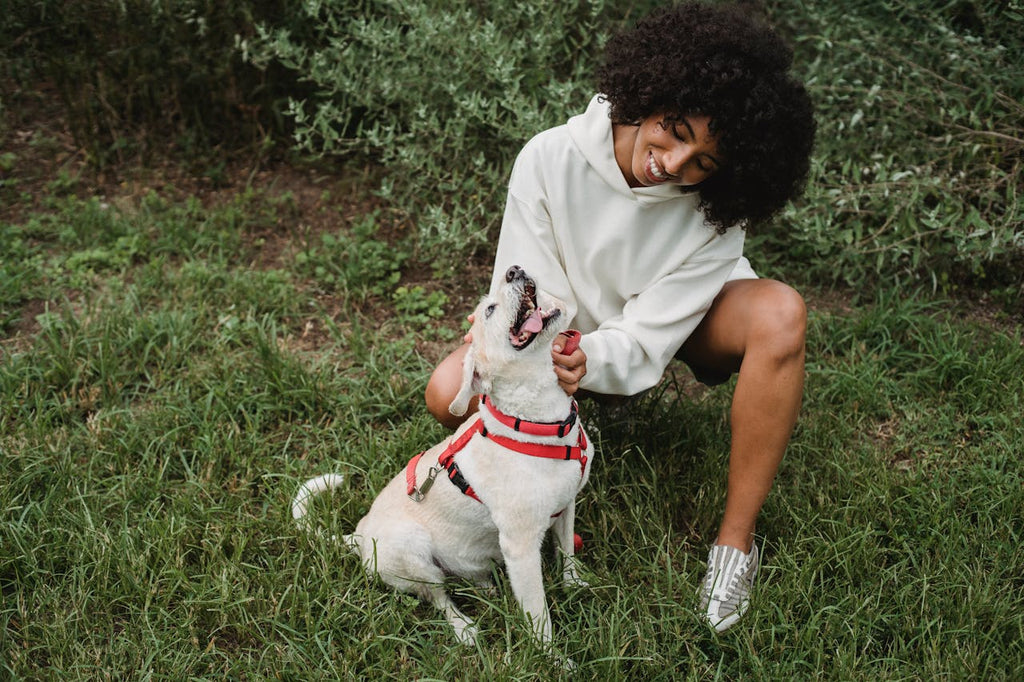
Essential Dog Sitting Tips for a Successful Stay

You're about to embark on a journey filled with tail wags and heartwarming moments. Dog sitting is more than just a task; it's an opportunity to form a unique bond with a furry friend. Your role is pivotal in ensuring a comfortable and enjoyable stay for your canine guest. From the moment you welcome them into your home, adapting to their routine becomes your priority.
It's not just about feeding and walks; it's about understanding their needs and quirks, creating a space that feels like home, and building a trust that reassures both the dog and their owner. Prepare to dive into an array of practical tips and explore innovative products from Paw.com that will transform this experience into a delightful adventure. Keep reading to learn more about mastering the art of dog sitting.
Understanding Your Canine Guest: Getting to Know the Dog
Getting to know your canine guest is the first step in ensuring a successful dog sitting experience. Every dog has unique breed-specific needs that you should understand. Some breeds require more exercise, while others need special grooming attention. Your approach should align with these needs to ensure the dog feels at home.
Familiarizing yourself with the dog's routine and habits plays a key role. Dogs thrive on routine, and maintaining their regular schedule for meals, walks, and bedtime helps them feel secure. Pay attention to their daily patterns, as this knowledge makes the transition smoother for both of you.
Recognizing the dog's likes and dislikes further enhances your ability to provide a comfortable stay. Some dogs love constant activity, while others prefer quiet cuddle time. Observing their reactions to different situations allows you to tailor your interactions to their preferences.
Respecting the dog's boundaries is essential. Just like humans, dogs have personal space and limits. Allow them to approach you on their terms and avoid forcing interaction. This respect builds trust and a positive relationship.
Lastly, identifying signs of stress or discomfort is crucial. Changes in behavior, like excessive panting, hiding, or decreased appetite, can indicate stress. Being able to spot these signs early helps you address any issues promptly, ensuring the dog's well-being.
Creating a Comfortable Environment: Setting Up the Perfect Space

Creating a comfortable environment is all about providing a designated space for the dog. This space acts as their safe haven, where they can relax and feel secure. It should be quiet, cozy, and accessible, giving them a sense of belonging.
Paw.com crates are an excellent choice for creating a safe and cozy area. These crates offer a personal space where dogs can retreat whenever they feel overwhelmed or tired. Ensure the crate is the right size, allowing the dog to stand, turn around, and lie down comfortably.
Selecting the right bed is also vital. Paw.com offers a range of beds that cater to different sizes and preferences. A good bed supports the dog’s joints and provides a comfortable resting place, crucial for their health and happiness.
Ensuring access to clean water and toys is a part of creating this environment. Fresh water should be available at all times, and toys provide mental stimulation and comfort. Choose toys that are appropriate for the dog's size and chewing habits.
Keeping the space clean and hazard-free is another key aspect. Regular cleaning prevents the build-up of dirt and germs, while removing potential hazards ensures the dog's safety.
Maintaining a Healthy Diet: Nutrition and Feeding
To ensure your furry guest's good health, it is important to stick with their usual feeding routine. Keeping up with consistent meal times and appropriate portion sizes can prevent digestive problems while helping the dog feel comfortable and at home.
It is essential to comprehend the existence of any dietary constraints or allergies. Certain canines may necessitate specific nutritional necessities that demand meticulous attention, whereas others need food items excluded from their meals. It is imperative always to consult with pet owners concerning unique dietary prerequisites and prohibited foods.
Positive reinforcement involves the use of treats which are helpful in rewarding good behavior and aiding training. Nonetheless, it is crucial to utilize them moderately so as not to overfeed.
It cannot be emphasized enough how crucial it is for dogs to have access to clean and fresh water at all times, particularly after physical activity or during high temperatures.
Being alert to changes in appetite or digestion is crucial for responsible feeding of your dog. By monitoring their eating habits and health, you can detect early signs of potential health issues and take prompt action to prevent minor problems from escalating into major concerns.
Exercise and Playtime: Keeping the Dog Active and Engaged
Tailoring exercise to the dog's age and breed is a key aspect of dog sitting. Younger dogs and certain breeds have high energy levels and need more exercise. Older dogs or those with health issues require gentler, shorter activities. Understanding these needs helps you keep the dog healthy and happy.
Regular walks and playtime are not just physical activities; they are opportunities for mental stimulation and bonding. Walks provide dogs with the chance to explore their environment, which is crucial for their mental well-being. Playtime, whether it's a game of fetch or tug-of-war, strengthens the bond between you and the dog.
Safe outdoor activities are essential for a dog's physical and mental health. This includes leashed walks in the park, supervised play in a secure yard, or even agility activities for more active breeds. Always ensure the environment is safe and free from hazards that could harm the dog.
Using Paw.com toys can greatly enhance engagement and fun. These toys are designed to keep dogs entertained and can be used in a variety of interactive games. They stimulate the dog's mind, relieve boredom, and prevent destructive behavior.
Balancing activity and rest time is crucial. Dogs, like humans, need downtime to rest and recharge. After periods of activity, make sure they have a quiet, comfortable place to relax and sleep. This balance helps maintain their overall well-being.
Health and Safety: Ensuring Well-being During the Stay
Having basic first-aid knowledge for dogs is a part of being a responsible dog sitter. This includes understanding how to handle minor injuries, recognizing symptoms of common ailments, and knowing when to seek veterinary assistance.
Recognizing signs of illness or injury is vital in ensuring the dog's health. Be aware of changes in behavior, appetite, or energy levels, as these can be early indicators of health issues. Prompt recognition and action can prevent minor issues from becoming serious.
Keeping emergency contact information handy is crucial. This includes the dog owner's contact details, the nearest vet's phone number, and an emergency animal hospital. Having this information readily available ensures quick action in case of emergencies.
Safe handling and transportation of the dog are important for their safety. Use appropriate harnesses, carriers, or seat belts when transporting dogs in a vehicle. Ensure they are always secure and comfortable during travel.
Precautions for outdoor and indoor safety are necessary to prevent accidents. Indoors, remove toxic plants, secure loose wires, and block off restricted areas. Outdoors, ensure fences are secure and the dog is always supervised, especially in unfamiliar environments.
Building a Lasting Bond: Establishing Trust and Comfort
Patience and consistency are vital in building a lasting bond with a dog. Dogs respond well to routines and predictable behavior. Being patient as they adjust to their new environment and consistently following their routine builds trust.
Techniques for building trust with the dog include gentle handling, respecting their space, and gradual introduction to new experiences. Speak in a calm, soothing voice and use positive body language to show you are a friend.
Recognizing and responding to the dog's emotions helps in establishing a deeper connection. Dogs express their feelings through body language and vocalizations. Pay attention to these cues to understand their emotional state and respond appropriately.
Positive reinforcement is a powerful tool in building trust and comfort. Reward good behavior with treats, praise, or playtime. This not only encourages the behavior you want but also strengthens the bond between you and the dog.
Creating a memorable and enjoyable experience for the dog ensures they feel loved and cared for. This involves providing a mix of affection, play, and relaxation. A happy dog is more likely to trust and bond with you, making for a successful and enjoyable dog sitting experience.
Reflecting on a Successful Dog Sitting Experience

In wrapping up, the journey of dog sitting is one filled with joy, challenges, and invaluable experiences. The key takeaways center around understanding the unique needs of each dog, creating a nurturing environment, and maintaining their health and safety. These best practices stem from thorough preparation and attentive care, ensuring every stay is as comfortable and enjoyable as possible for your furry guest.
As you continue on this path, remember that learning and improving your dog sitting skills is an ongoing process. Along the way, explore the diverse range of products from Paw.com, which can significantly enhance the quality of care you provide. From cozy beds to engaging toys, these products cater to a variety of needs, making your dog sitting journey even more rewarding.
Consider exploring Paw.com for all your dog sitting needs; it's a resource that promises to enrich your experience and that of the dogs you cherish.
Share this article
written by


